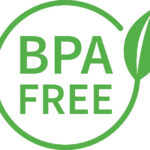A chopping board is a basic essential in any modern kitchen, which goes hand in hand with the kitchen knife. Any chef can slice, chop, and dice fruits, veggies, and meat on this kitchen tool. Additionally, you can opt to improvise it as a base for making a sandwich and cleaning salad leaves. With this vital kitchen appliance, you can quickly, safely, and efficiently work on most food ingredients.
Read More: 9 Space Saving Kitchen Appliances for Small Kitchens Or Student Dorm
If you happen to choose a high-quality chopping board, it will provide a reliable surface for the edge of your knives. Similarly, a poor-quality chopping board might also encourage the existence of harmful bacteria. However, choosing a high-quality chopping board might look cumbersome. Therefore, it is imperative to understand the factors to consider when selecting your kitchen’s most suitable one.
Here, we will check on some of the factors buyers can consider before purchasing this kitchen item. Some of these factors are size, material, cost, durability, color, style of construction, and sanitation. On this platform, we will go deeper into some of these factors.
Disclosure: As an Amazon Associate, we may earn an affiliate commission for purchases you make when using the links on this page.
Table of Contents
Chopping Board Size
The size of a particular chopping board is a significant factor that can really determine your efficiency in the kitchen. It would be best if you went for a larger cutting board where you can chop both large and small food materials. For instance, it is simpler to chop coriander on a large board than to slice huge chunks of meat on a small board. Equally, most of the large chopping boards have a drip-groove space, which is a bonus in preventing juice run-off. Before opting to purchase a particular cutting board, it can also be wise to consider the size of your sink. Ensure that the width of this kitchen kit fits in the sink for easier cleaning.
It is also reasonable to go for a board size that can fit your storage space with no hassle. In case you opt to purchase a plastic one, consider whether it can fit in your kitchen’s dishwasher. However, if you are a regular cook, you can go for different sizes of chopping boards. With such boards, you can deploy each of them when slicing specific food items. For example, you can slice cheese and onion on a small board and work on a whole chicken on a large board.
Chopping Board Material
Notably, the material of a cutting board is a prime feature that every user should consider. Chopping boards come in materials like wood, glass, plastic, steel, silicone, bamboo, and composite. You can opt to purchase a board of your preferred material after looking at the advantages of each type.
Wood Chopping Board
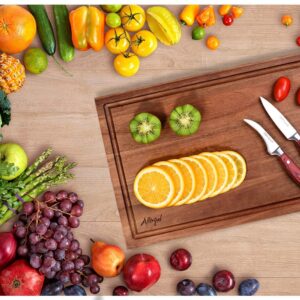
Pros
- The wooden cutting block is sturdy.
- Preserves the blade of your knife.
- Less prone to harbor bacteria.
- Made from natural material (wood) and, therefore, health-safe.
Cons
- It can be heavy to move on a countertop.
- It can easily absorb stains and odors.
Bamboo Chopping Boards
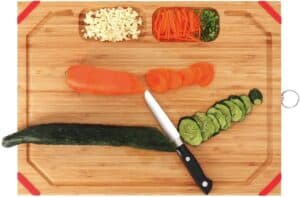
Pros
- It is an affordable board model.
- It is light to lift when working on it.
- It has laminated strips and is hence less prone to warping.
Cons
- You can easily blunt your knife due to its hard surface.
Stone or Glass Chopping Boards
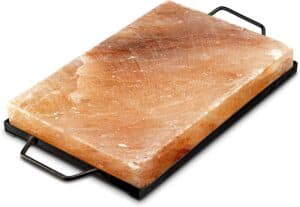
Marble boards bear visual appeal but are more expensive. Nevertheless, their features are relatively similar to those of glass. Note that using the glass chopping board is advisable for food serving purposes.
Pros
- It can be used for both serving and chopping.
- It is hygienic and easy to clean.
- They are light models.
- Discourage germs build-up
Cons
- They are fragile models.
- Can quickly blunt the knife’s blades.
- It cannot support the slicing of some food ingredients like meat.
Plastic Chopping Boards (HDPE)
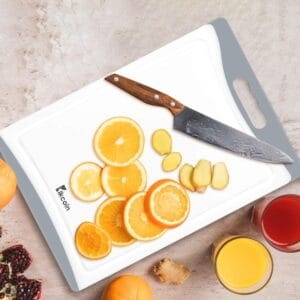
However, plastic boards with large knife marks might eventually harbor germs that risk your health.
Pros
- Are dishwasher-safe.
- Retains knife blade sharpness.
- Are inexpensive
- Are durable if well maintained.
Cons
- Some are too light and keep sliding on countertops.
- It can easily warp if regularly washed in a dishwasher.
Composite Chopping Boards (Wood-fiber/Phenolic resins)
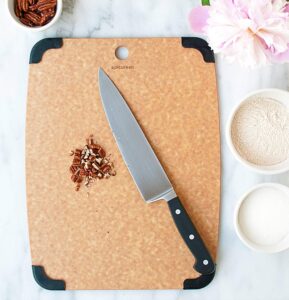
Pros
- Most of them are affordable.
- No issues of warping.
- Made from sustainable resources.
Cons
- Wood-based boards can damage knives’ blades.
- High-quality models are expensive.
Chopping Board Hygiene
Since a chopping board is an integral part of your kitchen, thorough cleaning and sanitization are vital for the maintenance of hygiene. After each chopping, cleaning should be done, aiming at the cutting marks and crevices on the board’s surface. The user focuses on these cutting marks, for they are the primary habitat for pathogens and bacteria. Cleaning cutting boards can be done using a sponge and a soapy solution. Additionally, if you need to eliminate a foul smell from the wooden boards, rinse them thoroughly with a saline solution. Besides, you can use salt and a half-cut lemon to rub against the board’s surface.
Alternatively, you can opt to deploy different cutting boards while working on food items like vegetables, raw meat, and others. This will reduce the risk of cross-contamination. Moreover, avoid the tendency of cleaning the boards with a piece of cloth as it can spread the germs from the cutting board to the entire kitchen. Specifically, the wooden board is perceived as more hygienic than plastic board models since they have anti-microbial properties. However, it is worth noting that some wood types are toxic and are not suitable for making cutting boards. But if you are to purchase a chopping board from popular and reputable manufacturers, this should not worry you.
Chopping Board Maintenance
In general, every chopping board model requires proper maintenance for it to remain in good condition. Good maintenance practice will elongate its service life and make your work more efficient. Glass boards are the easiest to clean compared to plastic and wooden ones. Additionally, it lacks the cutting marks that harbor pathogens. However, the glass board requires a lot more care when handling since it is brittle. Both bamboo and wooden boards require oiling to protect them from harmful micro-organisms and water.
Mainly, the oiling of cutting boards requires either wax or any food-safe oil. All you need is to apply this oil to the board’s surface and polish it using a clean cloth after some minutes. Also, proper storage of your board is quite paramount. Simply ensure your board is clean and borne dry, then afterward, keep it upright to ensure it does not hold moisture. Most chopping boards last longer, but the level of maintenance also determines this. Finally, always check the size of the cuttings on the surface of the board to examine the level of damage done to it. This can assist you in knowing whether you are to replace the board or to re-oil it.
Summary
To conclude, choosing the best chopping board for your kitchen can be more than one might think. It is almost impossible to purchase a great board model with no information about the factors to consider while buying one. For instance, size is a significant factor that any customer should consider. Bearing this factor in mind will eliminate the issue of storing this appliance in your kitchen. Similarly, purchasing the right size of a board will ease its cleaning in the sink. Additionally, choosing the suitable material for your cutting board will help you get one that serves the purpose. These and other factors will keep you in the know about what to pick and what to leave in the market.



